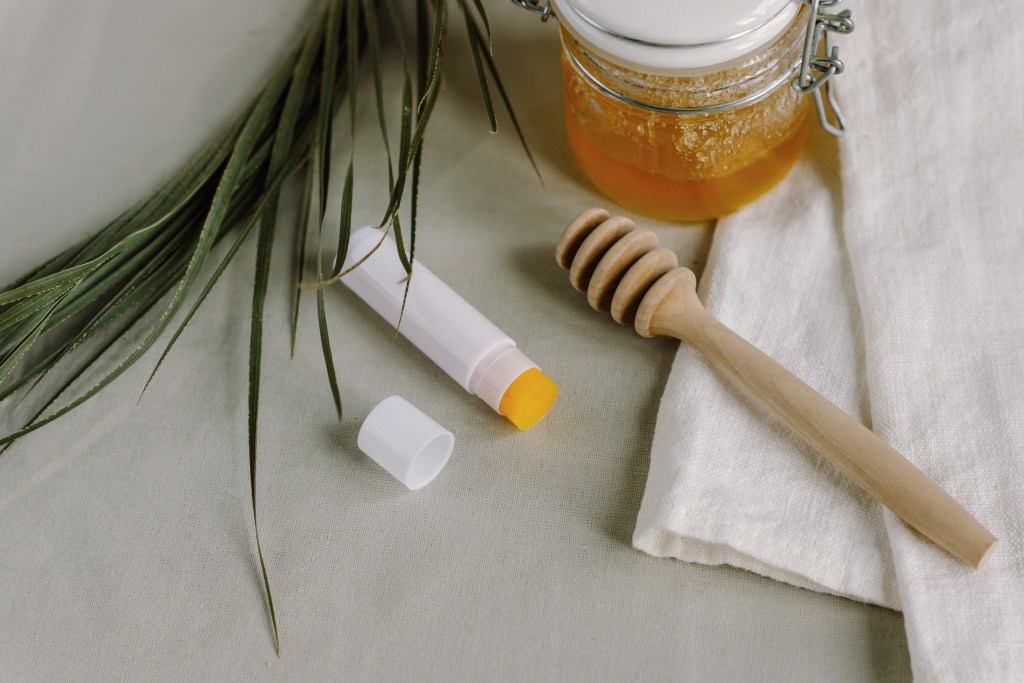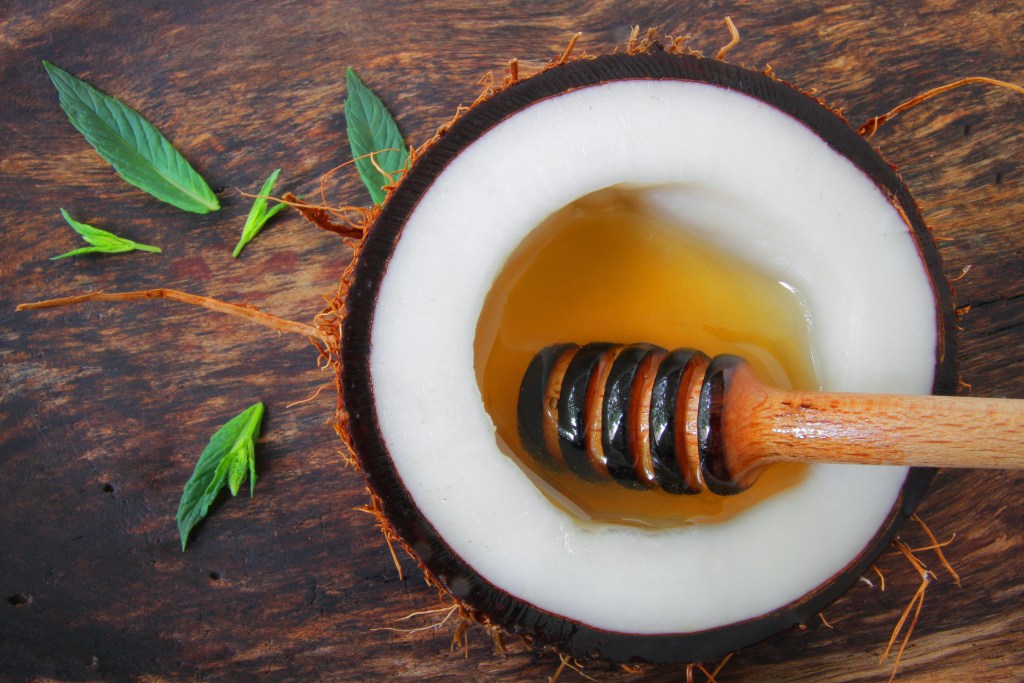Unless you’re immune to the colder and drier air, your lips are probably crying for a little TLC right now. Chapped lips are never in style and they’re severely uncomfortable, but the right products can help you keep them moist and supple no matter the weather.
Lips are technically skin, and while you’re focusing on applying product to your t-zone, your lips are feeling a little left out. Lips crave moisture in the colder months, and products like lip masks can be the ideal way to provide your lips with proper hydration to avoid unwanted cracking or peeling.
Unfortunately, lip masks can be pricey. But you can create your very own DIY lip mask at home and save some serious cash. If you think it’s too complicated to make your lip mask or wonder where on earth you can buy products — you’re in luck! Below we explain how lip masks differ from other lip products on the market and give you the complete 411 on how to make your own from two ingredients you probably have in your pantry right now.
What is a lip mask?
A lip mask, by definition alone, can be deceiving (as a mask implies removal after an extended period). However, lip masks are a hydration-based gel formula you apply to the lips daily to add extra hydration and moisture to the lip’s surface. Think of a lip mask as a glass of water for your lips.

Differences between lip masks, balms, and scrubs?
There’s a lot of confusion when it comes to which lip product to use for what purpose. Between masks, scrubs, balms, and chapsticks, it seems as though our lips are in quite a demand for some attention. Here’s a brief guide on the differences between each:
- Lip mask: Provides moisture to the skin for the time used (can be overnight). However, it does not prevent moisture from leaving the skin.
- Lip scrub: Utilizes ingredients like white or brown sugar to exfoliate the skin, leaving smooth lips. Scrubs create the perfect canvas for lip masks to help the skin absorb more moisture.
- Lip balm: Locks in moisture with a protective sealant to prevent the lips from drying out. Great to use while out and about — especially in between meals.
Making a DIY lip mask
If you’re looking to save a few dollars, create your own lip masks. Outlined below is the breakdown of both ingredients and directions to formulate your very own DIY lip mask from home.
What you need for your DIY lip mask
It may come as a shock, but you only need two ingredients to make a premium and luxurious lip mask.

Ingredients:
- Honey (make sure it’s authentic honey)
- Coconut Oil
Each of these ingredients deliver many benefits to our lips. Coconut oil is an excellent saturated fat that can help provide moisture to the skin and verse chapped lips. This oil has antimicrobial properties that can prevent bacterial or fungal infections through cracked and chapped lips. Honey, while sweet and delicious, also provides moisturizing and antimicrobial properties. Plus! Honey can help exfoliate your lip’s skin, removing any unwanted dead or dry skin.
Equipment:
- Microwave safe dish
How to make your DIY lip mask
- Put 1 Tbsp of coconut oil in a microwave-safe dish
- Heat in the microwave for 15-20 seconds
- While cooling, mix in 1 Tbsp honey thoroughly
- Apply to lips before bed
You’re on your way to polished and hydrated lips, thanks to your new DIY lip mask for chapped lips! While your lip mask can be used throughout the day, it’s recommended to apply it at night before bed. That way, your lips have a chance to soak in the moisture without being disturbed with eating, drinking, or even the occasional kiss. Now, say goodbye to cracked and peeling lips!
BlissMark provides information regarding health, wellness, and beauty. The information within this article is not intended to be medical advice. Before starting any diet or exercise routine, consult your physician. If you don’t have a primary care physician, the United States Health & Human Services department has a free online tool that can help you locate a clinic in your area. We are not medical professionals, have not verified or vetted any programs, and in no way intend our content to be anything more than informative and inspiring.


